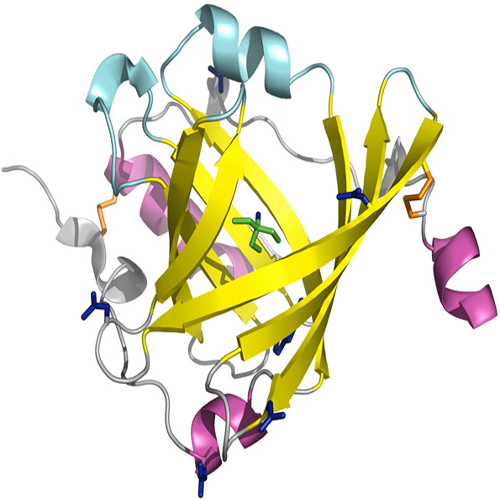The 1.8-Å Crystal Structure of α1-Acid Glycoprotein (Orosomucoid) Solved by UV RIP Reveals the Broad Drug-Binding Activity of This Human Plasma Lipocalin
16-Sep-2008
α1-Acid glycoprotein (AGP) is an important drug-binding protein in human plasma and, as an acute-phase protein, it has a strong influence on pharmacokinetics and pharmacodynamics of many pharmaceuticals. We report the crystal structure of the recombinant unglycosylated human AGP at 1.8 Å resolution, which was solved using the new method of UVradiation- damage-induced phasing (UV RIP). AGP reveals a typical lipocalin fold comprising an eight-stranded β-barrel. Of the four loops that form the entrance to the ligand-binding site, loop 1, which connects β- strands A and B, is among the longest observed so far and exhibits two full turns of an α-helix. Furthermore, it carries one of the five N-linked glycosylation sites, while a second one occurs underneath the tip of loop 2. The branched, partly hydrophobic, and partly acidic cavity, together with the presumably flexible loop 1 and the two sugar side chains at its entrance, explains the diverse ligand spectrum of AGP, which is known to vary with changes in glycosylation pattern.











